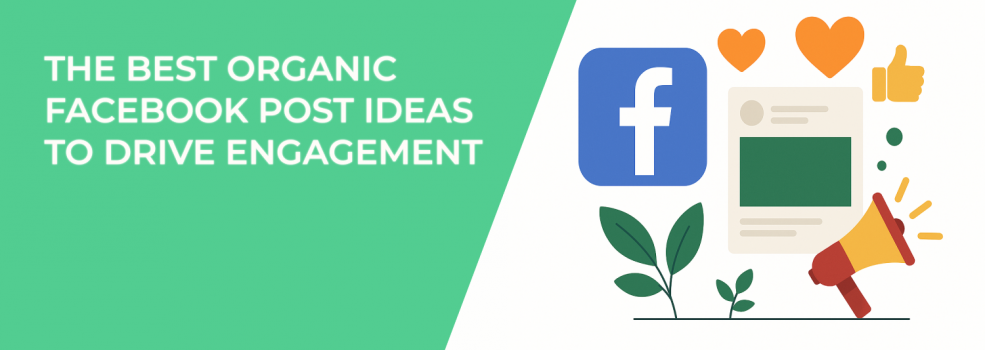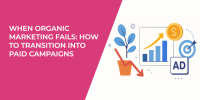Facebook's organic reach isn’t what it used to be — but that doesn’t mean it's useless. You just need to give the algorithm (and your audience) something worth reacting to.
What works now? Posts that feel personal, deliver quick value, spark reactions, and give people a reason to comment or share. Below are tested, practical Facebook post ideas marketers and advertisers can use to consistently drive engagement — without spending a dollar on ads.
1. Create Polls That Reveal Audience Preferences
Instead of posting random questions, treat polls as tools for market research and conversation starters.
Here’s how to do it:
-
Choose a topic relevant to your product or niche. For example, if you sell email marketing tools, ask: “What’s your biggest challenge with email open rates?”
-
Use options that reflect your audience's experience; don’t ask “yes” or “no” — ask them to pick between “A/B testing subject lines,” “Segmenting lists,” or “Writing better copy.”
-
Follow up with a comment or DM based on their answers; even better, turn the results into your next post.
Polls that feel insightful and useful get clicked. They also invite conversation in the comments, which boosts reach — and the responses can feed directly into your audience targeting strategy for future campaigns.
2. Show Behind-the-Scenes Moments — With Purpose
Pull back the curtain, but don’t post just for the sake of it. Behind-the-scenes content works when it adds context, builds trust, or shows process.
Try these ideas:
-
Share a photo of your team prepping for a product launch; include a short caption explaining the stakes or the timeline.
-
Post a time-lapse of how a campaign gets built — from brainstorming to publishing.
-
Show your workspace on a day when things didn’t go as planned; write honestly about what went wrong and how you're adapting.
These posts are powerful for nurturing warm audiences — especially when used alongside the tactics in how to build no-CPC warm audiences through organic Facebook activity.
3. Teach Something Quickly with a Swipeable Carousel
Carousel posts break information into visual steps. They’re great for Facebook and often get saved or shared because they’re easy to digest.
Use them to:
-
Break down a strategy step-by-step;
-
Compare “before vs. after” campaign performance;
-
Highlight stats that illustrate a transformation.
Want people to stop scrolling? Make the first image bold. Want them to share? End with a takeaway. If you're running paid ads too, these insights can directly support the metrics tracked in how to analyze Facebook ad performance beyond CTR and CPC.
4. User-Generated Content (UGC) — And How to Get More of It
Most marketers know UGC works, but few actively pursue it.
Here's how to get it consistently:
-
Ask your audience to tag you in relevant posts;
-
Create a branded hashtag for testimonials, setups, or results;
-
Offer small incentives — a shoutout, feature, or freebie.
Then, showcase the best submissions. UGC not only builds trust, it also drives engagement because it shows real people using your product. If you're running ads, learn how to repurpose this content by checking how to leverage organic engagement to fuel profitable Facebook ads.
5. Real Opinions, Hot Takes, and Micro-Rants
Most brands play it safe. But safe rarely sparks conversation.
If your brand has a strong point of view, say it. You can:
-
Share your stance on an outdated tactic (e.g., “Stop relying on ROAS alone — lifetime value matters more”);
-
Challenge a common belief (e.g., “Boosting posts is not a strategy — it’s a shortcut that rarely works long term”);
-
Reflect on what you’ve changed your mind about recently.
Opinion content works when it’s rooted in truth — and when it opens the door for your audience to weigh in. This tactic is particularly helpful if you're struggling with the issues outlined in why your Facebook ads are getting low engagement and how to fix it.
6. Tips That Are Specific, Not Generic
Forget “10 ways to boost your marketing.” Instead, zoom in on one powerful tactic and explain why it worked for you.
Post something like:
-
“We changed our CTA from ‘Buy Now’ to ‘Stop Wasting Time on Bad Leads’ — and saw an 18% boost in CTR.”
-
“Sending emails on Thursday at 7:45 a.m. gave us 25% more opens — we tested this over 4 campaigns.”
The more real your insight, the more likely your audience is to comment or share. To tie your content strategy to your campaign goals, revisit Meta Ad Campaign Objectives Explained.
7. Native Facebook Videos (Even Short Ones)
You don’t need polished production. A 30-second, value-packed video can do more than a static image if it’s:
-
Uploaded natively (not a YouTube link);
-
Subtitled for silent viewing;
-
Front-loaded with a strong hook in the first 3 seconds.
Try:
-
A screen recording showing how to solve a common problem;
-
A product use case;
-
A behind-the-scenes clip with commentary.
8. Throwback Posts — But Make Them Useful
People love origin stories, but only when they’re tied to a takeaway.
Use throwbacks to:
-
Reflect on growth (“3 years ago, we launched with $200 — here’s what we did right”);
-
Highlight lessons learned from failure;
-
Celebrate milestones in a way that inspires or informs your audience.
It’s about showing progress, not bragging. That nuance builds connection.
9. Fill-in-the-Blank Posts That Invite Instant Replies
This format is irresistible when done right.
Use prompts like:
-
“The best tool I discovered this year was ______.”
-
“I never run a campaign without ______.”
-
“My biggest ad mistake was ______.”
They work because they’re quick, interactive, and make your audience feel heard.
10. Post Surprising Stats — With Interpretation
Interesting stats are scroll-stoppers. But raw numbers aren’t enough.
Look for:
-
Unexpected insights (e.g., “41% of Gen Z still uses Facebook daily”);
-
Campaign learnings (“We reduced CPM by 30% just by changing placements”);
-
Industry trends you can explain in one paragraph.
Always add your own interpretation. Why does it matter? What should marketers do with that info?
Final Thoughts
You don’t need a massive budget to succeed on Facebook. But you do need consistency, creativity, and content that makes people pause.
The best-performing organic posts:
-
Encourage feedback;
-
Offer immediate value;
-
Spark a conversation, not just a click.
If you’re thoughtful about what you publish and watch what resonates, you’ll start building a warm audience you can eventually convert — without ever pressing “Boost.”

